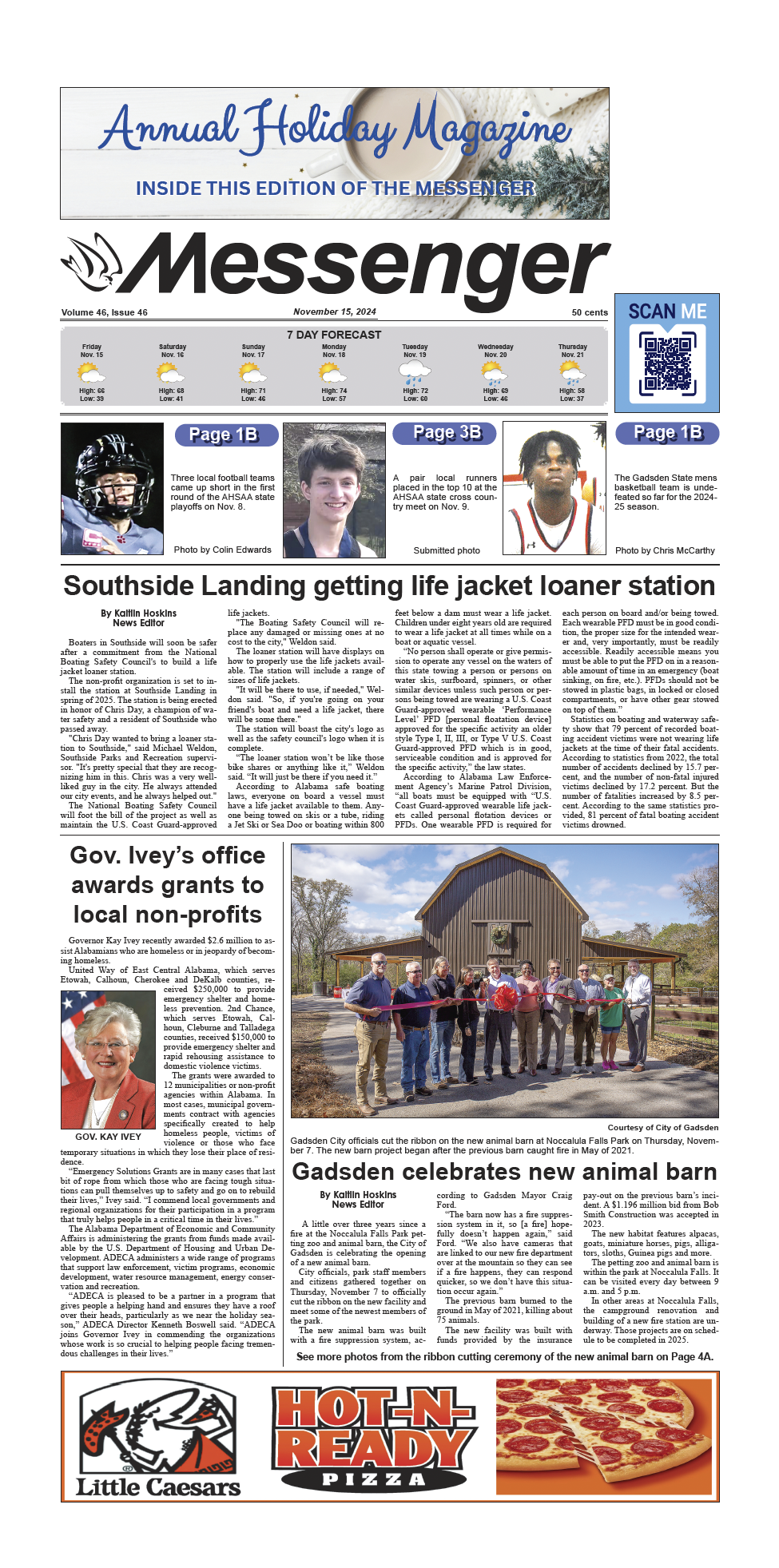By Danny Crownover
The Tunnel Block was an old deep drainage ditch that crossed Broad Street in downtown Gadsden and has since been built up and covered. Today, there are tunnels hidden underground where the tunnel once went. Many of the downtown buildings have huge basements at the site.
The early buildings built in 1868 had been an eyesore to Gadsden for many years. Fierce fires would rage about the block and small fires frequently would start in one of the houses, but the houses refused to burn.
Finally, city authorities became desperate and ordered the buildings torn down within 30 days. The structures were condemned as unsafe and unsanitary by the Gadsden City Council.
The ordinance became of no use as of March 26, 1907, when the buildings burned and all that remains of the old block was a pile of ashes.
The block was considered the city’s central business section. Four little wooden storerooms that went up in smoke. The fire alarm was late in being turned on and the buildings were destroyed before the firemen arrived on the scene.
The firemen went to work at once but confined their efforts mostly to saving neighboring property. The firemen were hindered by falling telephone cables and poles.
As soon as Chief Woodliff arrived, he saw that the old block was doomed and turned his attention to saving adjoining buildings. Chief Woodliff said that the fire was caused by a lamp explosion in one of the occupied houses.
The property belonged to Dr. E.S. Jones, Dr. E.H. Cross, Frank and James Cross and a Mr. Beekman of Natchez, Miss.
The houses were constructed in 1868, and being over the sort of ravine, there was room underneath for stores and some were operating. At one time, H.D. Woodward conducted the fashionable dry goods emporium of Gadsden in one of the buildings, which later was replaced by a three-story brick hotel.
Broad Street has been filled in to such an extent that nobody today can realize the size of the ravine that once ran through the city.
Another fire a couple of weeks later on April 16, 1907 at Tunnel Block completely paralyzed the Southern Bell Telephone system, and 600 phones were out of order.
Only about 75 phones in the eastern end of the city could be used at all, and these connections were very uncertain.
Every toll line running out of the city, except a local wire running to Anniston, was down. The lines to Alabama City and Attalla were destroyed, and so far as communication by telephone was concerned, Gadsden was entirely cut off from the outside world. In fact, every trunk line in and out of the city was out of business, and it was going to take some time to make the necessary repairs.
Three cables carrying 200 pairs of wires each were burned and broken. The cables ran close to the fire and one of the poles was burned at the top until it snapped in two. This caused the heavy lead and wire cables to sag, and their weight caused cables, poles and wires to fall down.
An electric light wire fell and melted a cable, and the whole business – cables, poles and wires – came down in a tangled and broken mass. This added an additional danger with which the firemen were unable to cope, and several people narrowly missed being hurt.
The manager of the telephone system, a Mr. Therrell, was in the area and immediately recognized the magnitude of the disaster. A lineman was sent up a pole and a temporary connection was cut in. The Atlanta, Ga., office of the phone company was asked to send men and material at once to repair the break.
The local construction forces were busy clearing away the debris and getting ready for the new cables and poles. Therrel said that even with the telephone system being completely out of business, the company’s chief loss would be in revenue from the toll lines.
There were 600 phones out of commission in the city alone, and none of the connections were working satisfactorily. In rebuilding the system, many of the phone numbers had to be changed.




